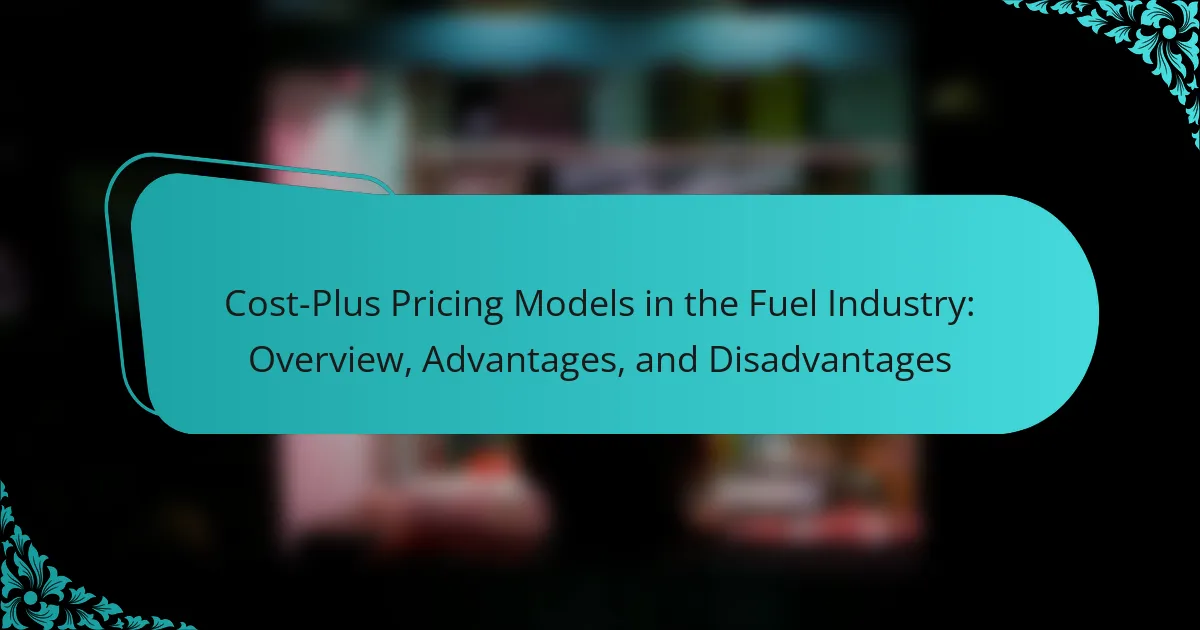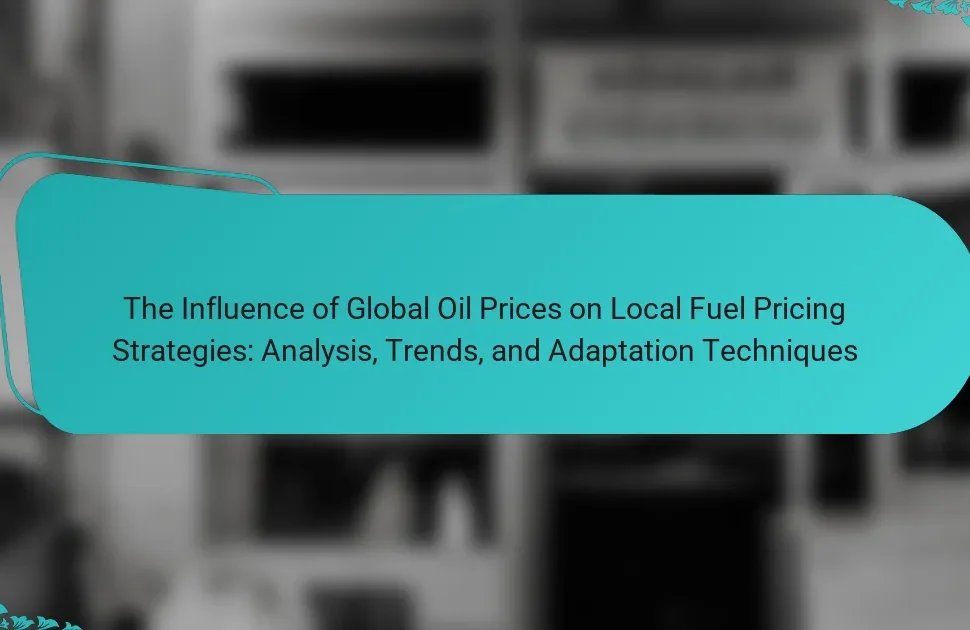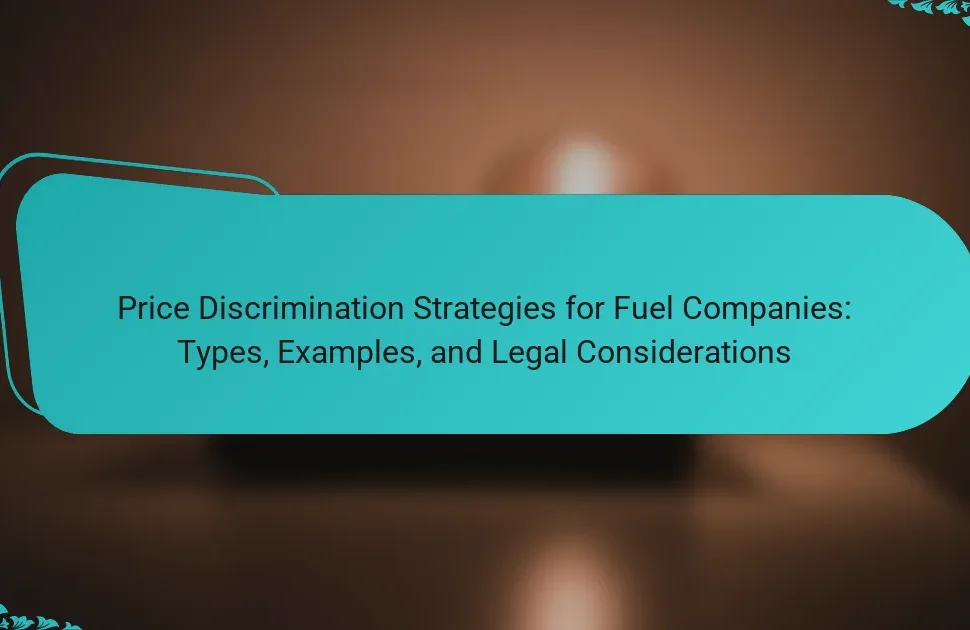
What are Cost-Plus Pricing Models in the Fuel Industry?
Cost-plus pricing models in the fuel industry involve setting prices based on the total cost of production plus a markup. This model ensures that all costs, including raw materials and operational expenses, are covered. The markup typically reflects the desired profit margin. Fuel companies often use this approach to maintain price stability. It allows for predictable revenue and can simplify pricing strategies. For example, if the production cost of fuel is $2 per gallon and the markup is $0.50, the selling price would be $2.50. This method is particularly useful in markets with fluctuating costs. It provides a straightforward way to adjust prices in response to changes in production expenses.
How do Cost-Plus Pricing Models function in the fuel sector?
Cost-plus pricing models in the fuel sector determine prices based on production costs plus a markup. This method begins with calculating the total cost of producing fuel, including raw materials, labor, and overhead. A predetermined profit margin is then added to these costs. This approach ensures that all expenses are covered while providing a profit.
For instance, if the total cost to produce a gallon of fuel is $2, a company may add a 20% markup. This results in a selling price of $2.40 per gallon. Cost-plus pricing is straightforward and transparent. It allows fuel companies to adjust prices in response to fluctuating production costs.
Moreover, this model is beneficial in contracts where price stability is necessary. However, it may not always reflect market demand. If competitors price lower, a company using cost-plus may lose market share. Overall, cost-plus pricing provides a structured approach but must be balanced with market conditions.
What are the key components of Cost-Plus Pricing Models?
Cost-plus pricing models consist of several key components. The first component is the total cost of production. This includes both fixed and variable costs incurred in producing a good or service. The second component is the markup percentage, which is added to the total cost to determine the selling price. This markup accounts for profit and other expenses.
Another essential component is the pricing strategy, which defines how the markup is applied. Some businesses may use a flat rate, while others may base it on a percentage of the total cost. Additionally, market conditions can influence the final price, as companies may adjust their markup based on competition or demand.
In the fuel industry, these components help ensure that prices cover costs while providing a profit margin. Historical data shows that businesses often use this model to maintain price stability and predictability in fluctuating markets.
How is the cost determined in these pricing models?
Cost in cost-plus pricing models is determined by adding a fixed percentage markup to the total cost of production. This total cost includes direct costs such as raw materials and labor, as well as indirect costs like overhead. The markup percentage is typically set based on industry standards or desired profit margins. For instance, if the total production cost is $100 and the markup is 20%, the final price would be $120. This method ensures that all costs are covered while providing a profit margin. Cost-plus pricing is commonly used in the fuel industry to maintain price stability amid fluctuating costs.
What are the advantages of using Cost-Plus Pricing Models in the fuel industry?
Cost-plus pricing models offer several advantages in the fuel industry. They ensure that all costs are covered by adding a fixed percentage markup to total production costs. This method provides pricing stability, which is crucial in a volatile market like fuel. It simplifies the pricing process, making it easier for companies to set prices without extensive market research. Additionally, cost-plus pricing can enhance profitability by guaranteeing a consistent profit margin. This model also fosters transparency, as customers can see how prices are derived from costs. Fuel companies can easily adjust prices in response to changes in production costs, ensuring competitiveness. Overall, these advantages contribute to more predictable financial planning and operational efficiency in the fuel industry.
How do these models ensure profitability for fuel companies?
Cost-plus pricing models ensure profitability for fuel companies by allowing them to set prices based on production costs plus a fixed margin. This method guarantees that all costs are covered, including operational expenses and overhead. Fuel companies calculate the cost of production, which includes extraction, refining, and distribution. They then add a predetermined percentage as profit. This approach stabilizes revenue even during market fluctuations. Historical data shows that companies using cost-plus pricing maintain consistent profit margins. For instance, the U.S. Energy Information Administration reports that fuel companies often achieve margins between 5% to 15% using this pricing strategy. This model also simplifies pricing decisions, making it easier to forecast profits.
What benefits do consumers experience from Cost-Plus Pricing Models?
Consumers experience transparency and predictability from Cost-Plus Pricing Models. This pricing model clearly outlines the costs involved in production plus a set markup. Consumers can understand how prices are determined, leading to trust in pricing. It also allows consumers to anticipate price changes based on cost fluctuations. For instance, if fuel prices increase due to higher production costs, consumers are informed about the reasons behind the price hike. Additionally, this model can lead to stable pricing in competitive markets. Overall, consumers benefit from clarity and stability in their purchasing decisions.
What are the disadvantages of Cost-Plus Pricing Models in the fuel industry?
Cost-plus pricing models in the fuel industry can lead to several disadvantages. One major issue is that these models may not accurately reflect market demand. This can result in prices that are either too high or too low, affecting competitiveness. Additionally, cost-plus pricing does not incentivize cost control. Companies may overspend, knowing that costs will be passed on to consumers.
Another disadvantage is the lack of flexibility. Prices set under this model do not easily adapt to changes in market conditions. This can lead to lost sales during price-sensitive periods. Moreover, it can create a disconnect between pricing and consumer perception of value. Customers may feel that prices are unjustified if they do not align with their expectations.
Lastly, reliance on historical costs can be problematic. Fuel prices can fluctuate significantly, and basing prices on past costs may lead to outdated pricing strategies. Overall, these disadvantages can hinder profitability and market positioning in the fuel industry.
How can these pricing models lead to inefficiencies?
Cost-plus pricing models can lead to inefficiencies due to a lack of market responsiveness. These models set prices based on production costs plus a markup. This approach does not consider consumer demand or competitor pricing. As a result, prices may be too high or too low compared to market conditions. High prices can reduce sales volume, while low prices can erode profit margins. Additionally, businesses may overestimate costs, leading to inflated prices. Inefficiencies can also arise from misallocation of resources based on incorrect pricing. Historical data shows that firms using cost-plus pricing often struggle to adapt to market changes effectively.
What risks do companies face when implementing Cost-Plus Pricing Models?
Companies face several risks when implementing Cost-Plus Pricing Models. One significant risk is the potential for reduced competitiveness. Cost-plus pricing does not consider market demand or competitor pricing. This can lead to higher prices than competitors, resulting in lost sales. Another risk is cost misestimation. If a company inaccurately calculates costs, it may set prices too low or too high. This miscalculation can erode profit margins or lead to losses.
Additionally, there is a risk of complacency. Companies might focus too much on cost management rather than innovation or value creation. This can hinder long-term growth. Furthermore, reliance on historical costs can be problematic. Changes in market conditions may render past data irrelevant. This misalignment can affect pricing strategies adversely. Lastly, cost-plus pricing may not align with customer perceptions of value. Customers may not be willing to pay a premium if they perceive insufficient value.
How do Cost-Plus Pricing Models compare to other pricing strategies in the fuel industry?
Cost-plus pricing models in the fuel industry set prices based on production costs plus a markup. This approach differs from competitive pricing, which focuses on market rates. Cost-plus pricing ensures coverage of expenses and a consistent profit margin. However, it may not respond quickly to market changes. In contrast, dynamic pricing adjusts based on demand fluctuations. Cost-plus models can lead to overpricing in competitive markets. Historical data shows that companies using cost-plus pricing may miss opportunities to maximize revenue during price surges. Overall, cost-plus pricing provides stability but lacks flexibility compared to other strategies.
What are the key differences between Cost-Plus and market-based pricing?
Cost-Plus pricing calculates the total cost of production and adds a markup for profit. In contrast, market-based pricing sets prices based on competitors’ prices and market demand. Cost-Plus pricing ensures all costs are covered, while market-based pricing may lead to lower profit margins. Cost-Plus pricing is straightforward but may ignore market conditions. Market-based pricing can adapt to changes in demand but risks undervaluing products. Cost-Plus pricing is commonly used in contracts, while market-based pricing is prevalent in competitive markets.
How does competition influence the effectiveness of Cost-Plus Pricing Models?
Competition significantly influences the effectiveness of Cost-Plus Pricing Models by determining price elasticity. In a highly competitive market, firms may struggle to pass on costs to consumers without losing market share. This pressure forces companies to adjust their markup percentages to remain competitive. If competitors offer similar products at lower prices, firms using cost-plus pricing may face reduced sales. Conversely, in less competitive markets, firms can maintain higher prices due to reduced price sensitivity among consumers. Historical data shows that industries with intense competition often see narrower profit margins, impacting the effectiveness of cost-plus pricing strategies.
What practical tips can fuel companies follow when using Cost-Plus Pricing Models?
Fuel companies should accurately calculate all costs associated with production and distribution when using Cost-Plus Pricing Models. This includes fixed costs, variable costs, and overhead expenses. Companies should also determine a reasonable markup percentage to ensure profitability while remaining competitive. Regularly reviewing cost structures is essential to adapt to market changes. Transparency in pricing can build trust with customers. Additionally, companies should analyze competitor pricing strategies to maintain market relevance. Implementing a pricing review schedule can help in adjusting prices based on cost fluctuations. Finally, training staff on the pricing model can enhance understanding and implementation across the organization.
Cost-plus pricing models in the fuel industry involve setting prices based on the total production cost plus a markup to ensure profitability. This pricing strategy provides price stability and transparency but may not accurately reflect market demand, leading to potential competitiveness issues. Key components include the total cost of production, markup percentage, and the influence of market conditions. The article explores the advantages, such as guaranteed profit margins and simplified pricing, alongside disadvantages like inefficiencies and risks associated with misestimating costs. Additionally, it compares cost-plus pricing with other pricing strategies, offering practical tips for fuel companies to effectively implement this model.




